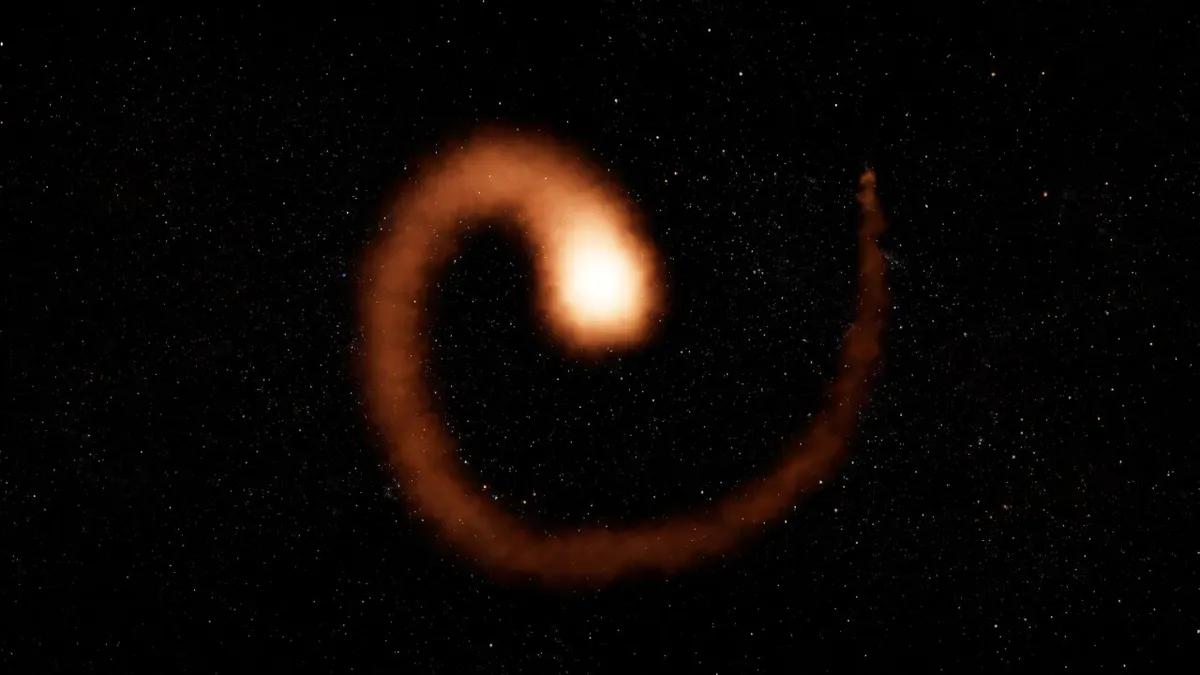
A recent study has unveiled intriguing findings about the enigmatic Wolf-Rayet 104 (WR 104) pinwheel star. Contrary to earlier beliefs that it might be a potential death star, research led by W. M. Keck Observatory's Instrument Scientist and astronomer Grant Hill confirms that WR 104 harbors a pair of massive stars orbiting each other every approximately eight months. This groundbreaking research sheds light on the complex interactions between these stellar giants and their remarkable dust structures.
At the heart of WR 104 lies a dual-star system. One of these stars is a Wolf-Rayet star, a massive, evolved entity known for its powerful winds enriched with carbon. The second star is a less evolved but even more massive OB star, characterized by its strong hydrogen-rich winds. The collision of these intense stellar winds generates a rotating pinwheel of dust that emits infrared light and spins in sync with the orbit of the stars.
The unique pinwheel structure of WR 104 was first identified at the Keck Observatory in 1999, captivating astronomers with its stunning imagery. Initially, WR 104 garnered attention as a potential source of a gamma-ray burst (GRB) that could be directed toward Earth. The models derived from the pinwheel images suggested that we were observing it from a perspective directly aligned with its rotation, leading to concerns that one of the stars' supernova explosions could produce a GRB aimed straight at us. This prompted the star to earn a second nickname—the Death Star.
Hill's recent research, published in the Monthly Notices of the Royal Astronomical Society, utilized advanced spectroscopy techniques with three instruments at the Keck Observatory: the Low Resolution Imaging Spectrometer (LRIS), the Echellette Spectrograph and Imager (ESI), and the Near-Infrared Spectrograph (NIRSPEC). Through these observations, Hill was able to measure the velocities of the two stars, calculate their orbital characteristics, and identify spectral features resulting from their colliding winds.
What Hill discovered was unexpected and potentially reassuring. Although the pinwheel dust spiral appears to be oriented face-on from Earth, the orbit of the two stars is tilted at least 30 to 40 degrees out of this plane. Hill commented, "When I started this project, I assumed that both the colliding winds and the stars’ orbit were aligned. Instead, I found a surprising tilt." This revelation raises important questions about how the dust spiral and the stars' orbits can be so misaligned.
This research not only alleviates concerns about the potential for a nearby GRB threatening Earth but also highlights the complexities and surprises that the universe holds. Hill reflected on the nature of astronomical studies, stating, "We may answer some questions but create more. In the end, that is sometimes how we learn more about the physics and the universe we live in." Clearly, WR 104 continues to be a source of fascination and mystery for astronomers, hinting that there is much more to uncover about this extraordinary star system.